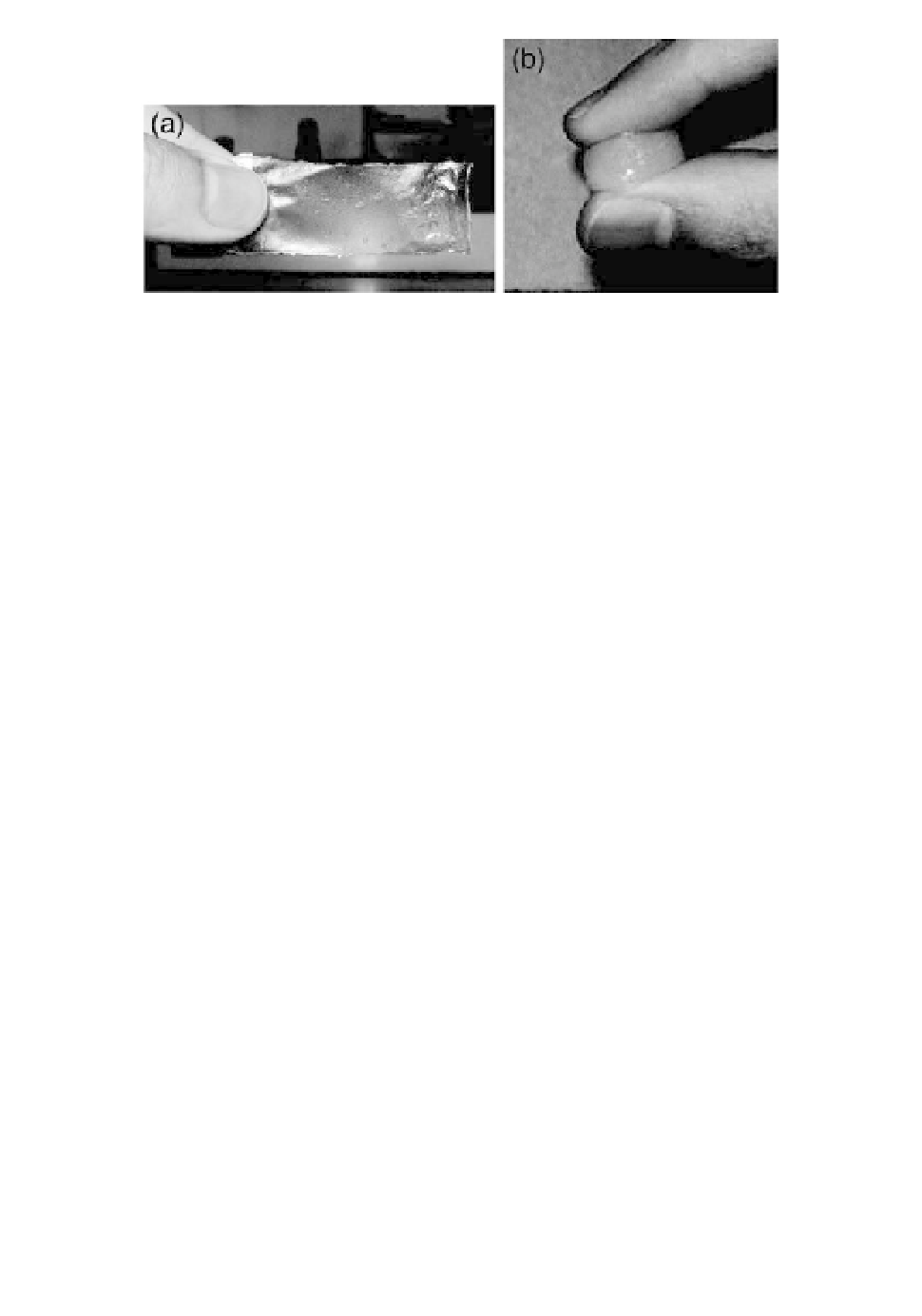Biology Reference
In-Depth Information
Figure 6.3
Photographs of a film (a) and a hydrogel (b) obtained from
amylose-grafted chitosan.
attributed to the formation of a double helix of amylose [11].
Therefore, it is assumed that one of the reasons for the insolubility
of these materials is probably caused by molecular aggregation as a
result of this crystalline structure. The aggregation in the material
would contribute its conversion into film and hydrogel forms (Fig.
6.3). For example, the hydrogel of the amylose-grafted chitosan
could be formed by drying the reaction mixture slowly in the vessel
at 40-50
°
C.
6.3
Chemoenzymatic Synthesis of Amylose-
Grated Cellulose
Two representative natural polysaccharides, cellulose and amylose,
are composed of the same structural unit, i.e., the glucose unit, but
linked through the different (1
-glucosidic
linkages, respectively. The roles of cellulose and amylose in nature
are completely different; the former is the structural material and the
latter acts as the energy source. In this section, the chemoenzymatic
synthesis of the graft heteropolysaccharide composed of these two
polysaccharides, i.e., amylose-grafted cellulose, is described [12].
This material has a very interesting and unique structure because it
is composed of two polysaccharide chains with the same structural
unit but with different linkages.
For the preparation of the desired amylose-grafted cellulose by
the chemoenzymatic method as shown in Fig. 6.4, the amino groups
have necessarily been introduced to cellulose by the reductive
→
4)-
β
- and (1
→
4)-
α

